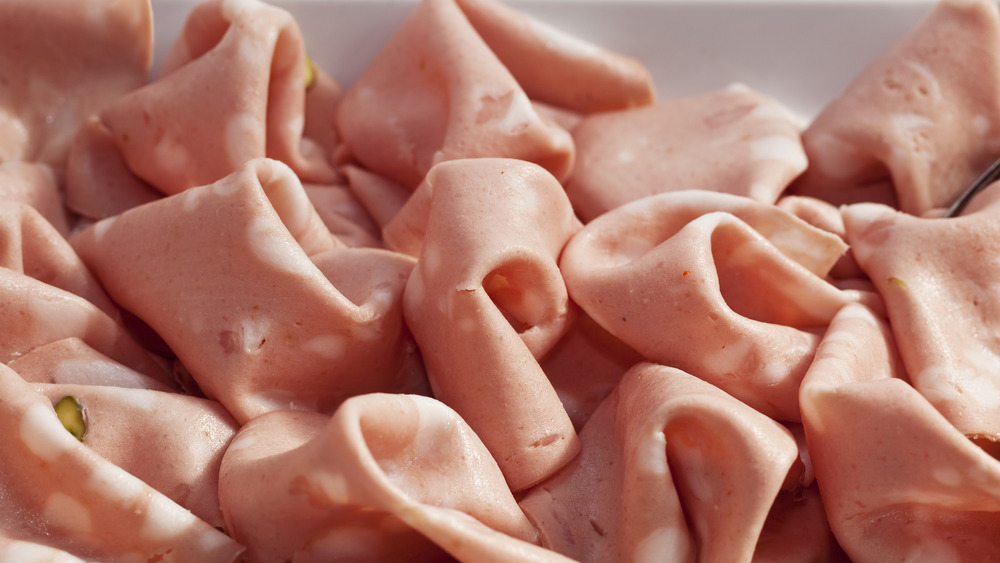Is Bologna Really Any Worse Than Other Deli Meat?
Of all the meats you can get at the deli counter, bologna is one of the ones that gets the most hate. It's made of pork, beef, or other animal parts or some combination of them, per The Journal Times, and Eat This, Not That dubbed it one of the worst processed meats you can buy. WebMD declared it one of the unhealthiest things to have in your fridge. Thanks to its questionable ingredients and not-so-great nutritional stats, bologna has gotten a bad rap over the years.
However, how does it stack up against other deli meats, many of which have also been slammed for things like high sodium and fat? Is bologna really that much worse than its other meaty counterparts? With Americans spending hundreds of millions of dollars on hundreds of millions of pounds of bologna in a year (via the National Hot Dog and Sausage Council), we set out to uncover the truth behind the Italian lunch meat. Here's what you need to know before the next time you make your go-to bologna sandwich.
It's high in fat and calories, but also protein
If you're someone who's watching their weight or dieting, bologna is hardly your best choice when it comes to deli meat. It's much higher in calories, for starters, with the average 2 oz. serving of bologna containing about 150 calories (via Livestrong). That's about triple the calorie count of the same size serving of sliced turkey.
The Italian processed meat also has a significantly high fat content, with each 2 oz. serving packing in about 13 grams of fat, which is a significant chunk of the recommended 44 to 77 grams per day (via the Cleveland Clinic). Plus, 5 grams of that is saturated fat, which the American Heart Association cautions can increase cholesterol and increase your risk of heart disease or stroke.
But fear not bologna lovers — your favorite pink slices has one big redeeming quality. Bologna is protein-rich, with 7 grams per serving (one gram more than an egg).

